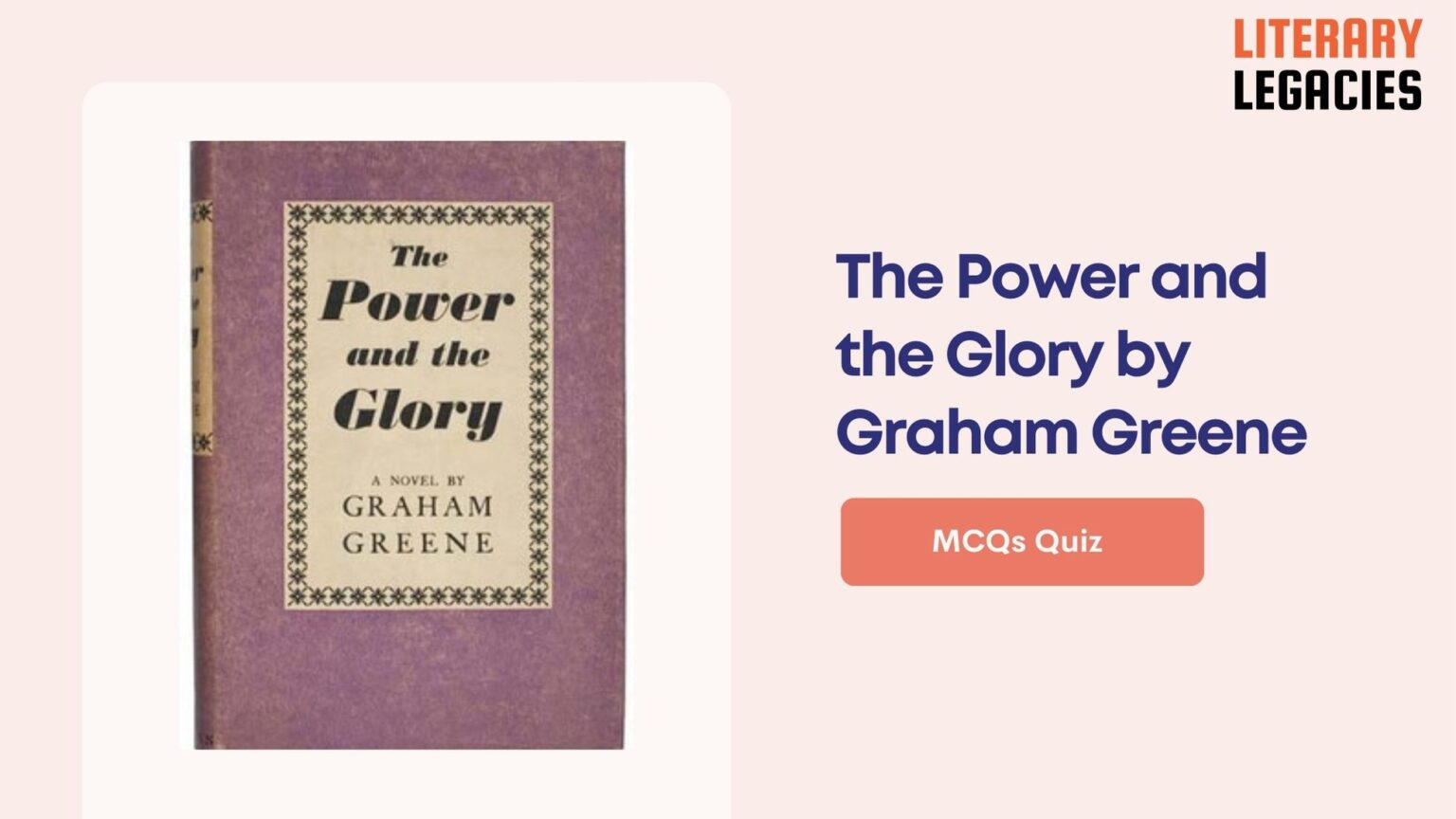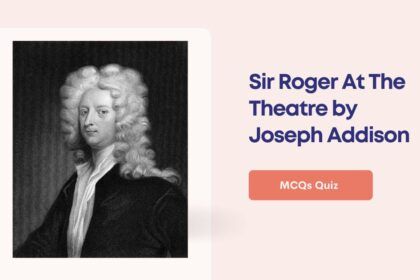1. Why is the priest on the run from the police at the beginning of the novel?
A. He committed a crime
B. He is a political activist
C. He is the last remaining clergyman in a state where religion has been outlawed
D. He was involved in a scandal
Answer: He is the last remaining clergyman in a state where religion has been outlawed (C)
The priest is the last remaining clergyman in a state where religion has been outlawed, making him a target for the authorities.
2. What is the priest’s original destination at the beginning of the novel?
A. A town called Carmen
B. A plantation owner’s estate
C. A boat that will take him out of the capital city
D. A village where he used to live and work as pastor
Answer: A boat that will take him out of the capital city (C)
The priest is waiting for a boat that will take him out of the capital city at the beginning of the novel.
3. Where does the priest hide out after missing his boat?
A. A house in the capital city
B. A barn on a plantation owner’s estate
C. A village where he used to live and work as pastor
D. A town called Carmen
Answer: A barn on a plantation owner’s estate (B)
The priest hides out in a barn on the estate of a plantation owner after missing his boat.
4. Who does the priest befriend on the plantation owner’s estate?
A. The plantation owner’s daughter
B. A man named Mr. Tench
C. A woman named Maria
D. The plantation owner
Answer: The plantation owner’s daughter (A)
The priest befriends the plantation owner’s daughter while hiding out on the estate.
5. Who does the priest meet in the village where he used to live and work as pastor?
A. Maria, a woman with whom he had a brief affair, and Brigida, his illegitimate daughter
B. The lieutenant
C. A man named Mr. Tench
D. The plantation owner
Answer: Maria, a woman with whom he had a brief affair, and Brigida, his illegitimate daughter (A)
The priest meets Maria, a woman with whom he had a brief affair, and Brigida, his illegitimate daughter, in the village where he used to live and work as pastor.
6. What does the priest do for the villagers in the town square?
A. Holds a speech against the government
B. Says mass for the villagers
C. Confronts the lieutenant
D. Hides from the police
Answer: Says mass for the villagers (B)
The priest says mass for the villagers in the town square.
7. What does the lieutenant do when he arrives in the village?
A. Searches the town for the priest
B. Arrests the priest
C. Leaves the village
D. Takes a hostage
Answer: Takes a hostage (D)
The lieutenant takes a hostage, whom he says he will execute if he finds that the villagers have been lying to him about the whereabouts of the wanted man.
8. Who does the priest meet on his way to the town of Carmen?
A. The lieutenant
B. A man named Mr. Tench
C. A man known simply as the mestizo
D. The plantation owner
Answer: A man known simply as the mestizo (C)
The priest meets a man known simply as the mestizo on his way to the town of Carmen.
9. Why does the lieutenant not realize that he has found the priest in the village?
A. The villagers turn him in
B. The lieutenant is corrupt
C. No one in the village turns him in
D. The priest is in disguise
Answer: No one in the village turns him in (C)
No one in the village turns the priest in, so the lieutenant does not realize that he has found the man he is looking for.
10. What is the priest’s occupation?
A. Clergyman
B. Politician
C. Plantation owner
D. Teacher
Answer: Clergyman (A)
The priest is a clergyman, the last remaining in a state where religion has been outlawed.
11. What is the mestizo’s likely intention in following the priest?
A. To help the priest escape
B. To become a priest himself
C. To collect the reward money by turning him in
D. To learn about the priest’s journey
Answer: To collect the reward money by turning him in (C)
The mestizo’s actions suggest that he is motivated by the reward money.
12. Why does the priest return to the capital city?
A. To try and escape again
B. To say mass and procure a bottle of wine
C. To turn himself in to the authorities
D. To meet with Padre Jose
Answer: To say mass and procure a bottle of wine (B)
The priest is trying to find a way to say mass, which is why he returns to the capital city.
13. What does the man at the hotel sell to the priest?
A. A bottle of wine only
B. A room at the hotel
C. A bottle of brandy only
D. A bottle of wine and a bottle of brandy
Answer: A bottle of wine and a bottle of brandy (D)
The priest buys a bottle of wine and a bottle of brandy from the man at the hotel.
14. What happens to the priest after he is caught with the bottle of brandy?
A. He is taken to jail
B. He is executed on the spot
C. He is let go with a warning
D. He is forced to leave the city
Answer: He is taken to jail (A)
The priest is caught with the bottle of brandy and taken to jail.
15. Who does the priest meet at the abandoned estate of the Fellows?
A. Mr. Lehr
B. The gringo
C. The mestizo
D. An Indian woman
Answer: An Indian woman (D)
The priest meets an Indian woman whose son has been shot and killed by the gringo.
16. What does the priest do after meeting the Indian woman?
A. He leaves her and continues on his journey
B. He goes to find the gringo
C. He stays with her at the abandoned estate
D. He accompanies her to a burial ground
Answer: He accompanies her to a burial ground (D)
The priest accompanies the Indian woman to a burial ground and then leaves her.
17. Why does the priest agree to accompany the mestizo back across the border?
A. To help the gringo
B. To escape from the authorities
C. To collect the reward money
D. To hear the gringo’s confession
Answer: To hear the gringo’s confession (D)
The priest knows he is walking into a trap, but he agrees to hear the gringo’s confession.
18. What does the lieutenant take to the priest on the night before his execution?
A. A book of prayers
B. A bottle of brandy
C. A letter from Padre Jose
D. A bottle of wine
Answer: A bottle of brandy (B)
The lieutenant brings a bottle of brandy to the priest on the night before his execution.
19. What does the boy realize about the executed priest?
A. That he was a martyr and a hero
B. That he was a coward
C. That he was a liar
D. That he was a thief
Answer: That he was a martyr and a hero (A)
The boy realizes that the executed priest is a martyr and a hero.
20. What does the boy do when he finds a priest at his door?
A. He asks him questions
B. He turns him away
C. He calls the authorities
D. He opens the door wide to let him in
Answer: He opens the door wide to let him in (D)
The boy, who has come to respect the priest, opens the door wide to let him in.
21. What is the main difference between Juan’s story of martyrdom and the priest’s?
A. Juan’s story is more relatable
B. Juan’s story is more tragic
C. Juan’s story is more romanticized
D. Juan’s story is characterized by composure, loyalty, and faith, whereas the priest’s is not
Answer: Juan’s story is characterized by composure, loyalty, and faith, whereas the priest’s is not (D)
The novel highlights the differences between idealized stories and real-life experiences.
22. What is Greene trying to convey through the priest’s observation of the wanted poster?
A. That the priest is a skilled detective
B. That the gringo is a master of disguise
C. That appearances can be deceiving
D. That the police are incompetent
Answer: That appearances can be deceiving (C)
Stories and representations can give a misleading or exaggerated picture of a person.
23. What is the theme that extends beyond storytelling to other forms of representation?
A. The danger of idealization
B. The importance of representation
C. The unreliability of stories and representations
D. The power of faith
Answer: The unreliability of stories and representations (C)
Greene is interested in exploring the difference between idealized stories and real-life experiences.
24. What is the relationship between love and hate in the novel?
A. They are opposing forces
B. Love is stronger than hate
C. Hate is a result of love
D. They are intertwined emotions
Answer: They are intertwined emotions (D)
Love and hate are not opposing forces, but rather intertwined emotions.
25. What does the priest realize about his own humility?
A. That he is trapped in a paradox of humility
B. That he has achieved true humility
C. That humility is not important for a Christian
D. That he is proud of his humility
Answer: That he is trapped in a paradox of humility (A)
The priest recognizes the paradox of Christian humility.
26. What is the result of the priest’s despair over his weakness and inability to be humble?
A. He becomes proud of his humility
B. He attains true humility
C. He abandons his faith
D. He becomes complacent in his sacrifices
Answer: He attains true humility (B)
The priest’s despair leads to his attainment of true humility.
27. What does the novel suggest about the nature of seeming opposites?
A. They are only applicable in specific contexts
B. They are mutually exclusive
C. They are opposing forces
D. They are interconnected and intertwined
Answer: They are interconnected and intertwined (D)
The novel explores the interconnectedness of seeming opposites.
28. What is the significance of the priest’s and the lieutenant’s meeting at the end of the novel?
A. It demonstrates the potential for understanding between opposing figures
B. It marks the beginning of a new conflict
C. It highlights their opposition
D. It shows the priest’s weakness
Answer: It demonstrates the potential for understanding between opposing figures (A)
The meeting between the priest and the lieutenant highlights the potential for understanding between opposing figures.
29. What is the significance of the beauty the priest finds in moments of greatest suffering and hardship?
A. It highlights the complexity of human experience
B. It is a form of escapism
C. It is a sign of his weakness
D. It is a result of his faith
Answer: It highlights the complexity of human experience (A)
The beauty the priest finds in suffering highlights the complexity of human experience.
30. What is the main theme explored in the novel’s portrayal of the priest and the lieutenant?
A. The danger of idealization
B. The interconnectedness of seeming opposites
C. The power of faith
D. The importance of representation
Answer: The interconnectedness of seeming opposites (B)
The novel explores the interconnectedness of seeming opposites through the characters of the priest and the lieutenant.
31. What is the main characteristic of an idealist?
A. Imagining a much better world than the current one
B. Being highly skeptical of change
C. Being overly critical of others
D. Focusing on the negative aspects of life
Answer: Imagining a much better world than the current one (A)
Idealism can be a driving force for positive change, but it can also lead to unrealistic expectations and disappointment.
32. What is the lieutenant’s downfall according to the text?
A. His inability to accept suffering and death as a part of life
B. His conviction that he knows what is best for the people
C. His lack of faith in a higher power
D. His failure to help the poor
Answer: His conviction that he knows what is best for the people (B)
The lieutenant’s arrogance and conviction that he knows what is best for the people lead to feelings of frustration and anger.



